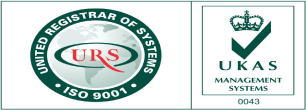
Quality Management Solution
A quality management system (QMS) is a collection of business processes focused on consistently meeting customer requirements and enhancing their satisfaction. It is aligned with an organization’s purpose and strategic direction. It is expressed as the organizational goals and aspirations, policies, processes, documented information and resources needed to implement and maintain it.In the 21st century, QMS has tended to converge with sustainability and transparency initiatives, as both investor and customer satisfaction and perceived quality is increasingly tied to these factors. Of QMS regimes, the ISO 9000 family of standards is probably the most widely implemented worldwide – the ISO 19011 audit regime applies to both, and deals with quality and sustainability and their integration.
Walter A. Shewhart made a major step in the evolution towards quality management by creating a method for quality control for production, using statistical methods, first proposed in 1924. This became the foundation for his ongoing work on statistical quality control. W. Edwards Deming later applied statistical process control methods in the United States during World War II, thereby successfully improving quality in the manufacture of munitions and other strategically important products.
Customer Focus
A number of highly successful quality initiatives have been invented by the Japanese (see for example on this pages: Genichi Taguchi, QFD, Toyota Production System). Many of the methods not only provide techniques but also have associated quality culture (i.e. people factors). These methods are now adopted by the same western countries that decades earlier derided Japanese methods.
Customers recognize that quality is an important attribute in products and services. Suppliers recognize that quality can be an important differentiator between their own offerings and those of competitors (quality differentiation is also called the quality gap). In the past two decades this quality gap has been greatly reduced between competitive products and services. This is partly due to the contracting (also called outsourcing) of manufacture to countries like India and China, as well internationalization of trade and competition. These countries amongst many others have raised their own standards of quality in order to meet International standards and customer demands. The ISO 9000 series of standards are probably the best known International standards for quality management.
Customer satisfaction is the backbone of Quality Management. Setting up a million dollar company without taking care of needs of customer will ultimately decrease its revenue.
The influence of quality thinking has spread to non-traditional applications outside of walls of manufacturing, extending into service sectors and into areas such as sales, marketing and customer service
Quality improvement and more
There are many methods for quality improvement. These cover product improvement, process improvement and people based improvement.
Quality Management Software
Quality Management Software is a category of technologies used by organizations to manage the delivery of high quality products. Solutions range in functionality, however, with the use of automation capabilities they typically have components for managing internal and external risk, compliance, and the quality of processes and products. Pre-configured and industry-specific solutions are available and generally require integration with existing IT architecture applications such as ERP, SCM, CRM, and PLM.
Siemens QMS Professional Version 10.01
QMS Professional is a multi-lingual, cross-industry computer-aided quality (CAQ) solution that complies with the international quality standards, including DIN EN ISO 9000, ITAF 16949:2016, Q101 and VDA 6.1. QMS Professional 10.01 is a process-oriented, modular system that supports the closed-loop quality product lifecycle, managing complexities for planning, control and monitoring of processes and corporate quality.
Along the closed-loop quality cycle, users can easily find favorite modules sorted into Plan, Do, Check and Act (Deming cycle) phases. The user administration tools have been redesigned to make operation as easy as possible.
With QMS Professional 10.01, you can experience even more advantages:
Benefits
- Stylish, brand-new QMS Professional Home start page
- Powerful change management Process
- Tight customer complaint management with supplier collaboration
- Simple process modeling with document management links
- Rapid defect acquisition due to photo/ grid integration
- Enhanced expert know-how in statistics (Westinghouse)
Features
- New layout for QMS start page with ribbon bar
- Change management process from inspection plan/control plan to FMEA
- Customer complaint management with efficient root cause analysis
- Tight supplier collaboration including automatic email notifications
- Creation of process flow charts with all required documents
- Defect acquisition and evaluation with photo, grid and defect pattern


